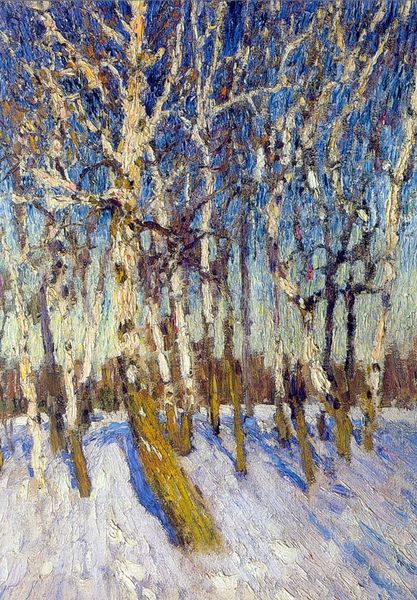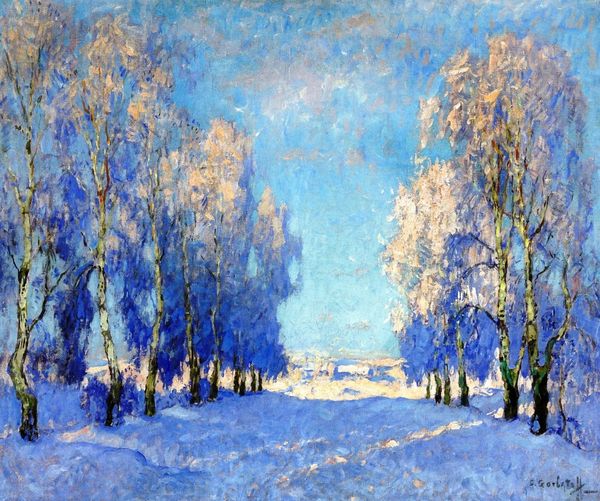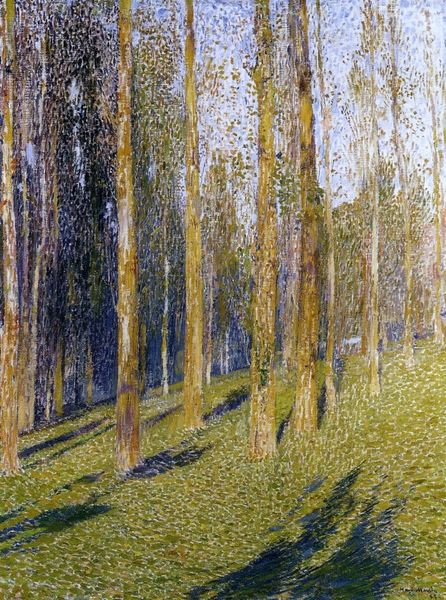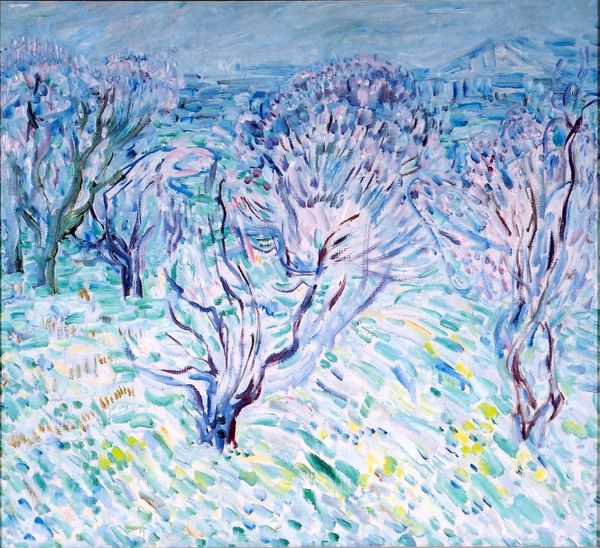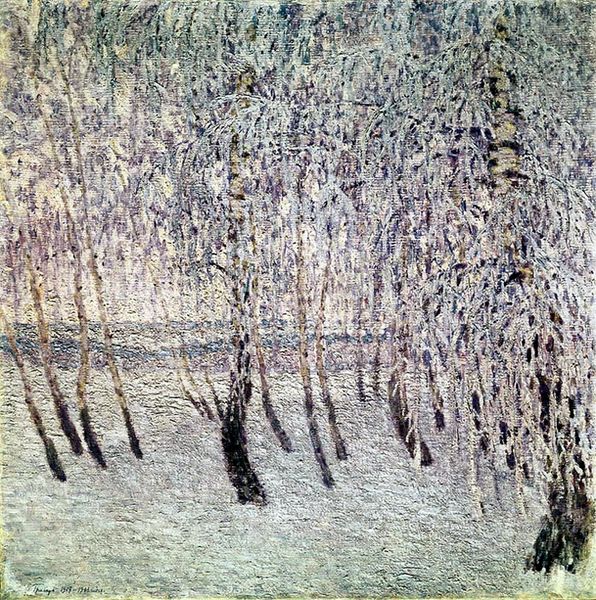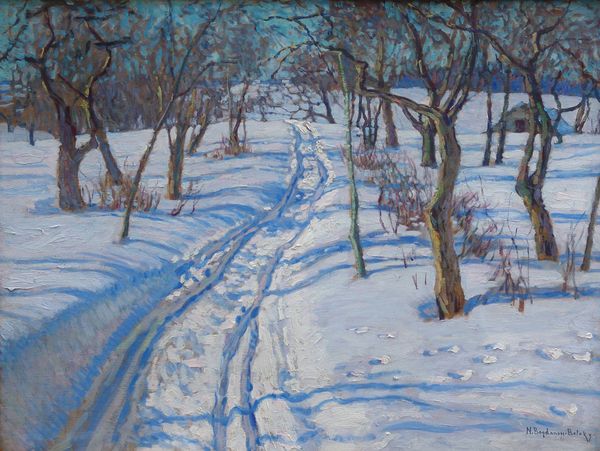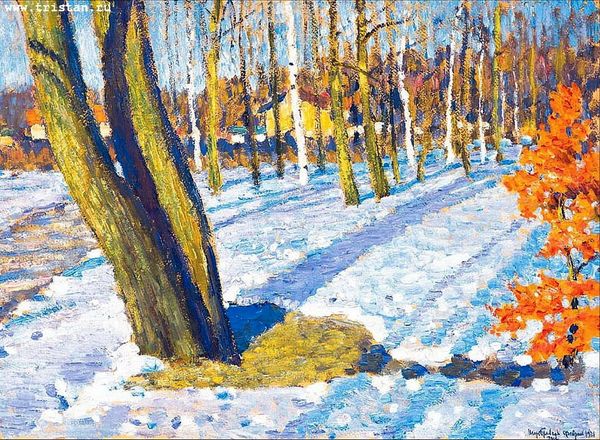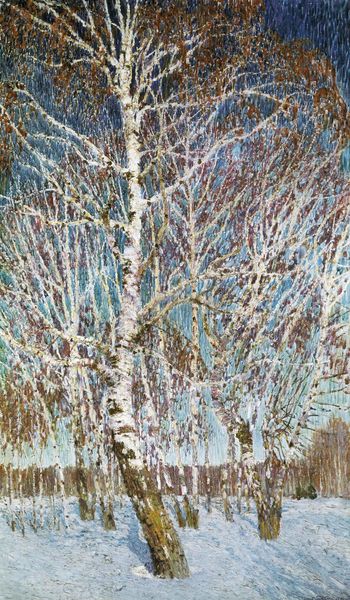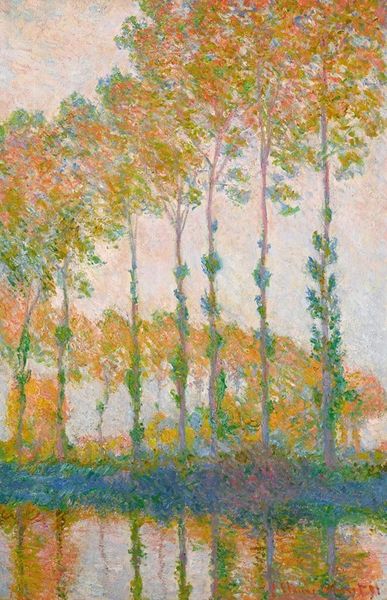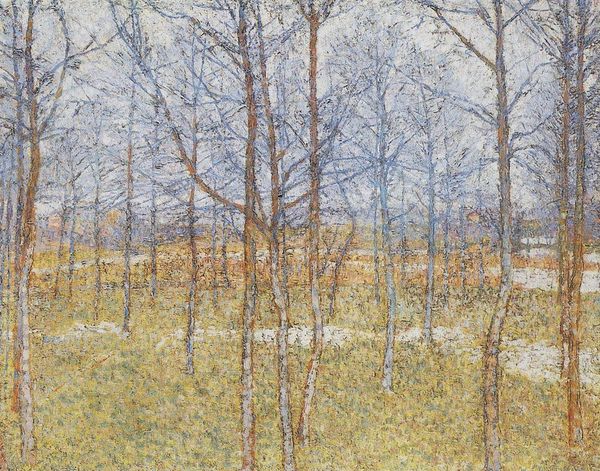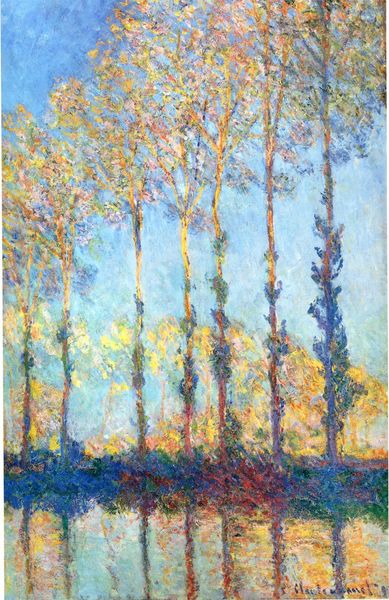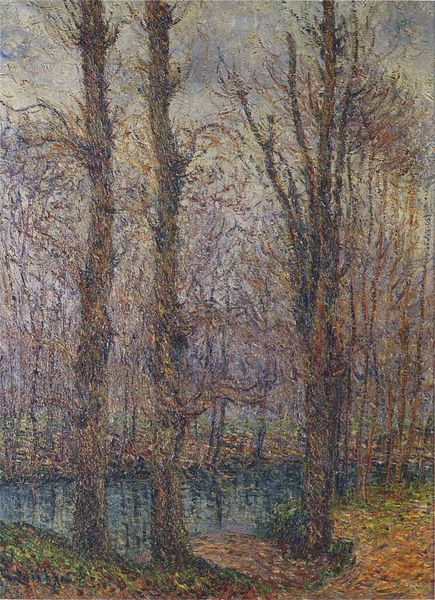
Copyright: Public domain US
Editor: Here we have Igor Grabar’s “Winter Morning” from 1907. It's an oil painting, and what immediately strikes me is the dominance of cool blues, which create this incredibly crisp, almost palpable sense of winter's chill. How do you interpret the painting’s significance in terms of art history, its public reception at the time it was produced? Curator: That's a perceptive observation. This work, produced during a period of increasing social and political ferment in Russia, reflects a turn inward. The focus on landscape, and particularly the Russian winter, was often intertwined with constructing a sense of national identity. Do you see how the emphasis on a specific place makes it political? Editor: In that it could serve to create a sense of unified experience? The blue is overwhelming in the image, it does seem like such a constructed experience of what winter looks like. Curator: Exactly. Grabar, like many artists of his time, walked a tightrope. He wanted to participate in modern European movements, like Impressionism and Post-Impressionism, but also create distinctly "Russian" art. How might the plein-air technique, painting outdoors, have served both agendas? Editor: I guess it feels both international and also really focused on capturing a unique sense of place, and that can serve national pride? Curator: Precisely. It allowed him to engage with modern artistic trends while anchoring the work in the tangible reality of the Russian landscape. It's a negotiation of artistic identity within a specific socio-political context. Editor: It's fascinating how landscape can be so much more than just a pretty scene; I'm now thinking about who is being represented and for what purposes. Curator: And that, perhaps, is the most powerful thing art can do: making us aware of how we are constructing what we are seeing.
Comments
No comments
Be the first to comment and join the conversation on the ultimate creative platform.

